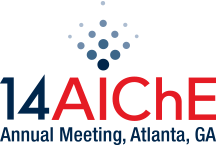

The non-oxidative aromatization of methane provides a promising route of direct methane conversion to valuable aromatics and has been extensively studied from both fundamental and applicative points of view since its first report in 1993. Mo/HZSM-5 has been well recognized the most promising catalyst for the reaction, but it suffers from severe deactivation due to coking. On the other hand, at catalyst-working temperatures and non-oxidative conditions coking seems unavoidable. Thus the most practical solution to the deactivation problem is to develop a highly efficient, continuous regeneration technology to maintain the catalyst activity under operational conditions. Over the past thirteen years our team has been focusing its effort on the development of a really applicable technology for regeneration of coked Mo/HZSM-5 catalyst. Sustained effort has brought us the following findings of practical significance. 1) The high initial activity of Mo/HZSM-5 can be maintained via its cyclic regeneration in H2 at 973-1073 K, and the H2-regeneration approach is now well recognized to be the only practical way of reactivating coked Mo/HZSM-5 catalyst. 2) Continuous H2 regeneration can be easily realized in a two-bed circulating fluidized bed reactor and the high initial activity of Mo/HZSDM-5 can be maintained at 1073 K and superficial velocities for several hours without addition of any fresh catalyst. 3) a binder-free, well shaped fluidizable Mo/HZSM-5 has been developed and successfully tested in a two beds circulating fluidized bed reactor system. In this presentation we will give a detailed description of how the major operating parameters are determined including temperature, space velocity and the mean residence times of the catalyst in the methane converter and regenerator, and of how the catalyst-circulating rate is precisely controlled by using a screw-type feeder. Some achievements on the fundamentals of the catalytic system will be also presented.
References
1) Xu et al., Chem. Eng. Proc., 72(2013)90-102.
2) Xu et al., J. Natural Gas Chem., 21(2012)729-744.
3). Xu et al., Chem. Eng. J., 168(2011)390-402.
Presenter(s)
Once the content has been viewed and you have attested to it, you will be able to download and print a certificate for PDH credits.
If you have already viewed this content,
please click here
to login.
